Robert Rauschenberg's triumphant survey at Tate Modern, goat included
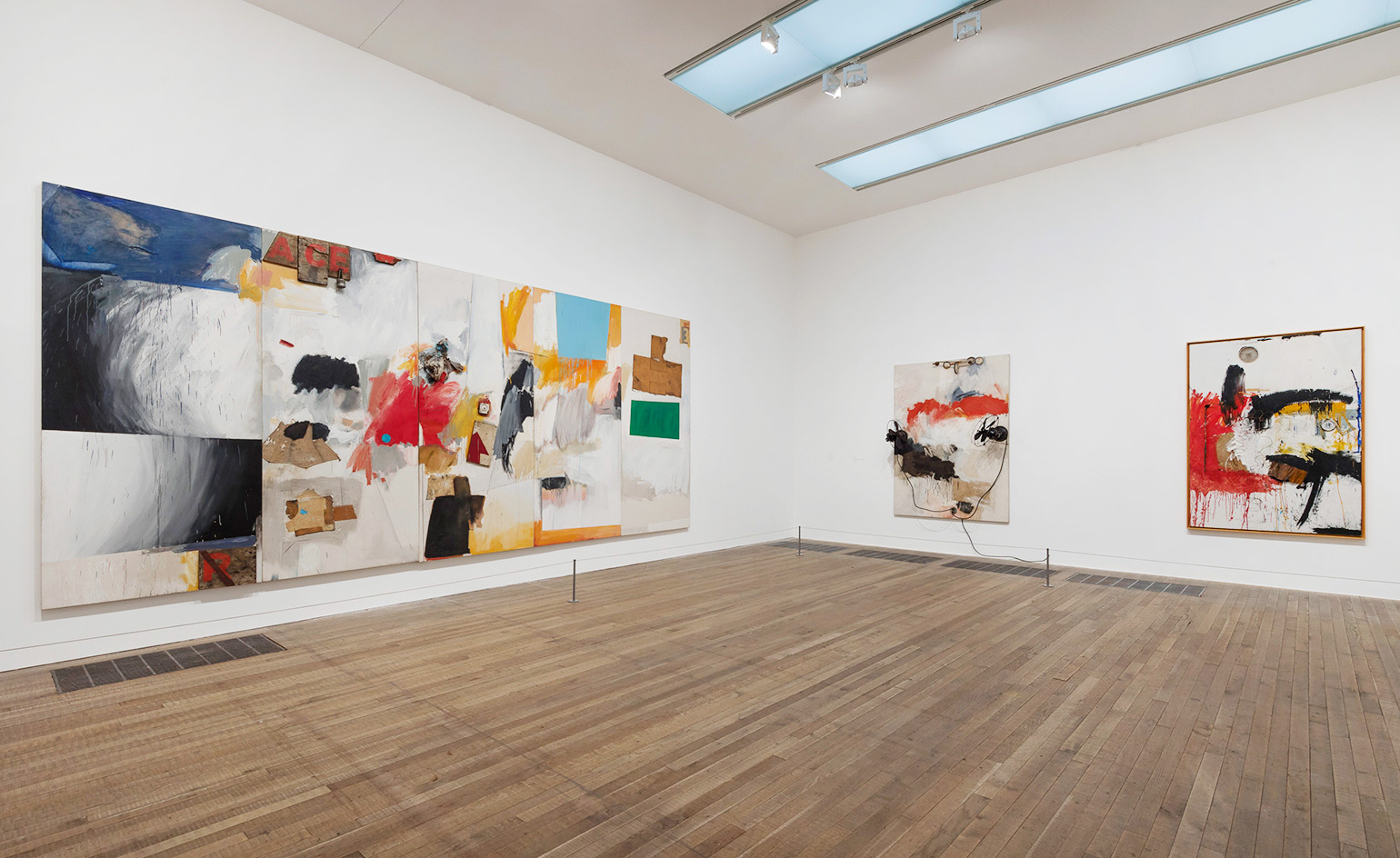
There was much art-world hype earlier in the year about Robert Rauschenberg's famously fragile Monogram goat travelling to London for the first time in two decades. It was posited as a lynchpin in Tate Modern's anticipated Rauschenberg retrospective – another UK first since the great American artist passed away in 2008.
Kneeling down next to the beast, looking into Monogram's glassy eyes, he was worth the 20-year wait. There's humorous absurdity in his vacant expression, his chin hairs matted in a rainbow seal of oil paint. But there's also something mournful. He's suspended in a ridiculous tyre belt, to be ogled by visitors. Monogram began life as a $15 stuffed animal at a used furniture store. Since then, he's had quite the life. Like many of the artist's renowned Combines, Monogram developed various appendages over a number of years. At one stage, he was mounted on a vertical canvas before being slotted inside the rubber tyre for which he's now known. As Rauschenberg said, the tyre and the goat 'lived happily ever after'.
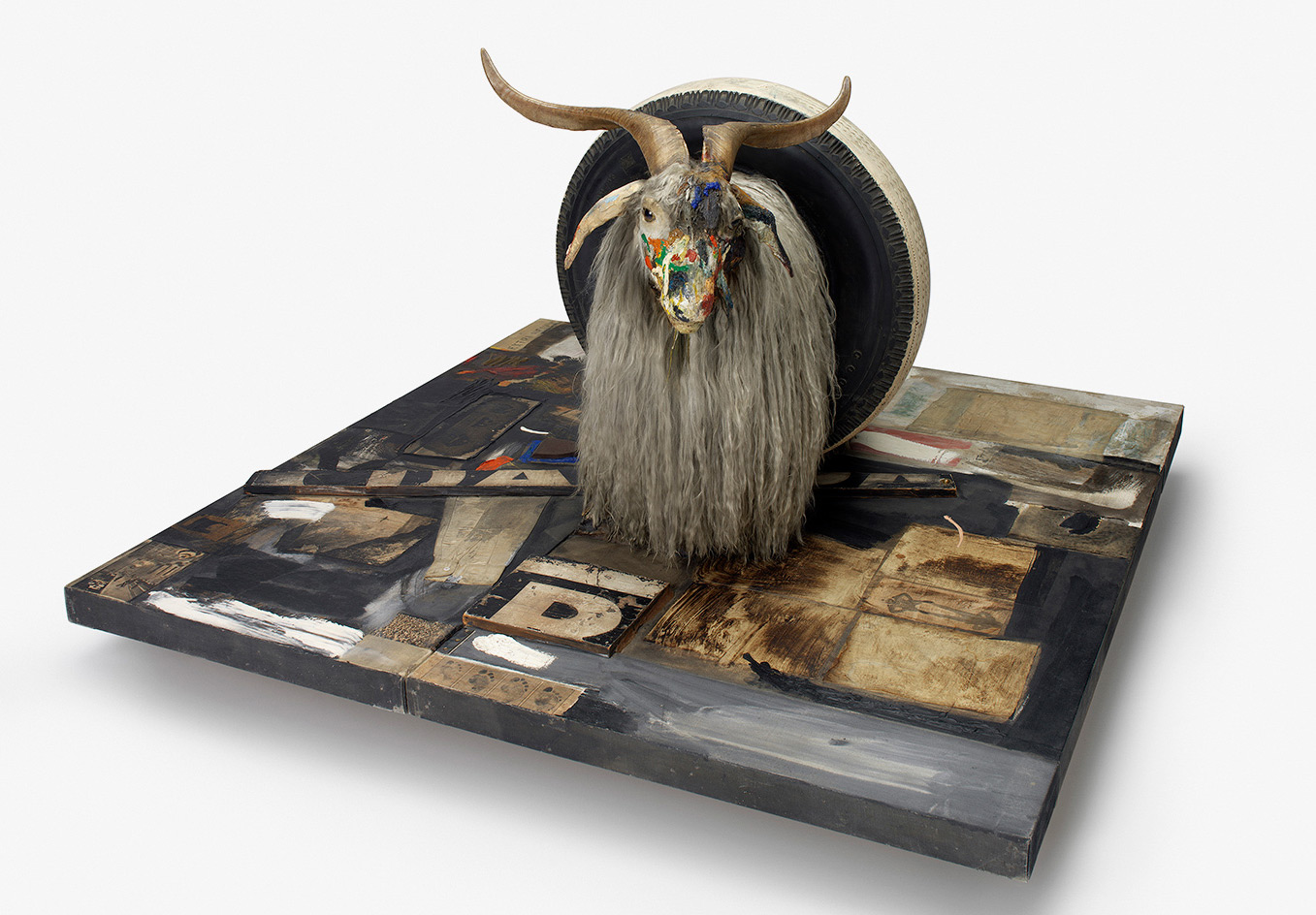
'Monogram', 1955–59. Purchased 1965 with contribution from The Friends of Moderna Museet, Moderna Museet, Stockholm. © Robert Rauschenberg Foundation, New York
A little like his Combines, Rauschenberg was continually adding appendages and arms to his practice, driven by an insatiable curiosity with materials. Each chapter of his six-decade career (including his silkscreen period, live performances, technology and material abstraction) has a dedicated room in the exhibition. This change of mediums and methods mirrors the artist's moving physical locations. He toured, holidayed and journeyed extensively – most famously to Cuba, Spain, Italy and Morocco with Cy Twombly in the 1950s. As Tate's director of exhibitions Achim Borchardt-Hume says, 'he saw the experience of art as inseparable from the experience of life'.
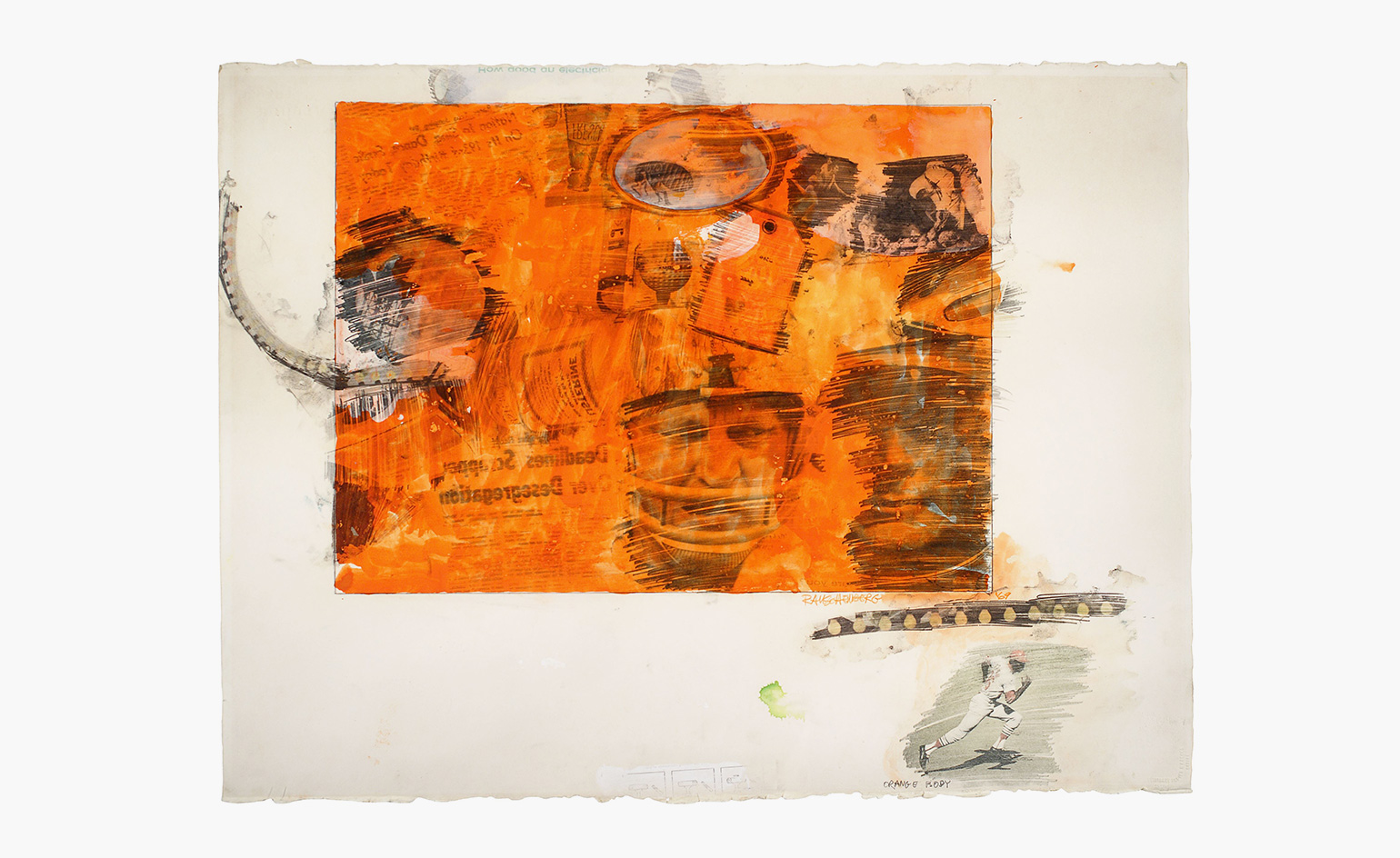
The exhibition starts with Rauschenberg's early experiments at Black Mountain College, in a room overwhelmed by monochrome. It's as if colour couldn't be introduced yet, because Rauschenberg was too preoccupied by texture. These early works have a simplicity, an air of cool and a material playfulness that lay the foundations for his future work. A renowned early collaboration with John Cage, Automobile Tyre Print (1953) hints at what's to come from Rauschenberg's performative work. Here, Rauschenberg laid page upon page of typewriter paper on a driveway, and asked Cage to run over them in his car, with ink on the wheel. As Rauschenberg said at the time, Cage was 'both the printer and the press'.
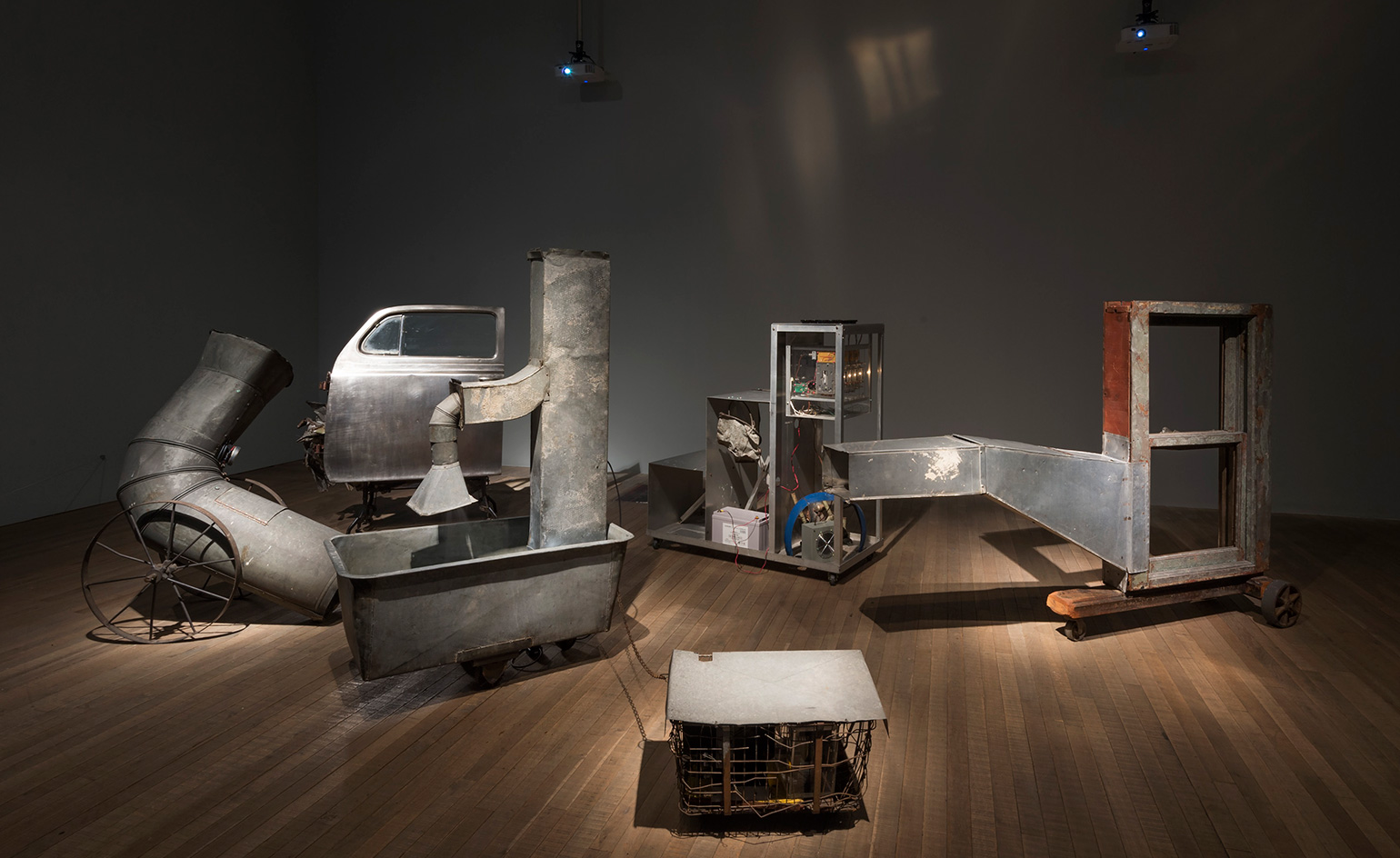
'Oracle', 1952–55.
The idea of repurposing and using objects that are already lying around (as seen in this early use of a car and typewriter paper) went on to define Rauschenberg's practice, and help redefine the landscape of American art. Rauschenberg used the objects of life: boots, paint pot lids, desk fans and, perhaps most importantly, newspaper clippings. He embedded a radio into one of his Combines, with the dials still showing, so that visitors could choose the station. In this sense, the audience – the users of these essential life objects – was as much a part of his work as the materials were.
Rauschenberg's choreographic pieces (here represented by a host of archival material, photographs, projections and film) grew in direct relation to his sculptures and paintings. Though static, his silkscreens have the same energy and life that his dances do; framed against a wall, his later fabric swathes ripple like flags when a visitor walks by too closely.
Despite the vast spectrum of the artist's work, each phase bares his distinct signature. What this exhibition does so cleverly is to simply allow this genius to unfold. Chronologically, without fuss, or unnecessary embellishment, the Tate has allowed Rauschenberg's work to speak for itself. Any art world hype is wholeheartedly justified.
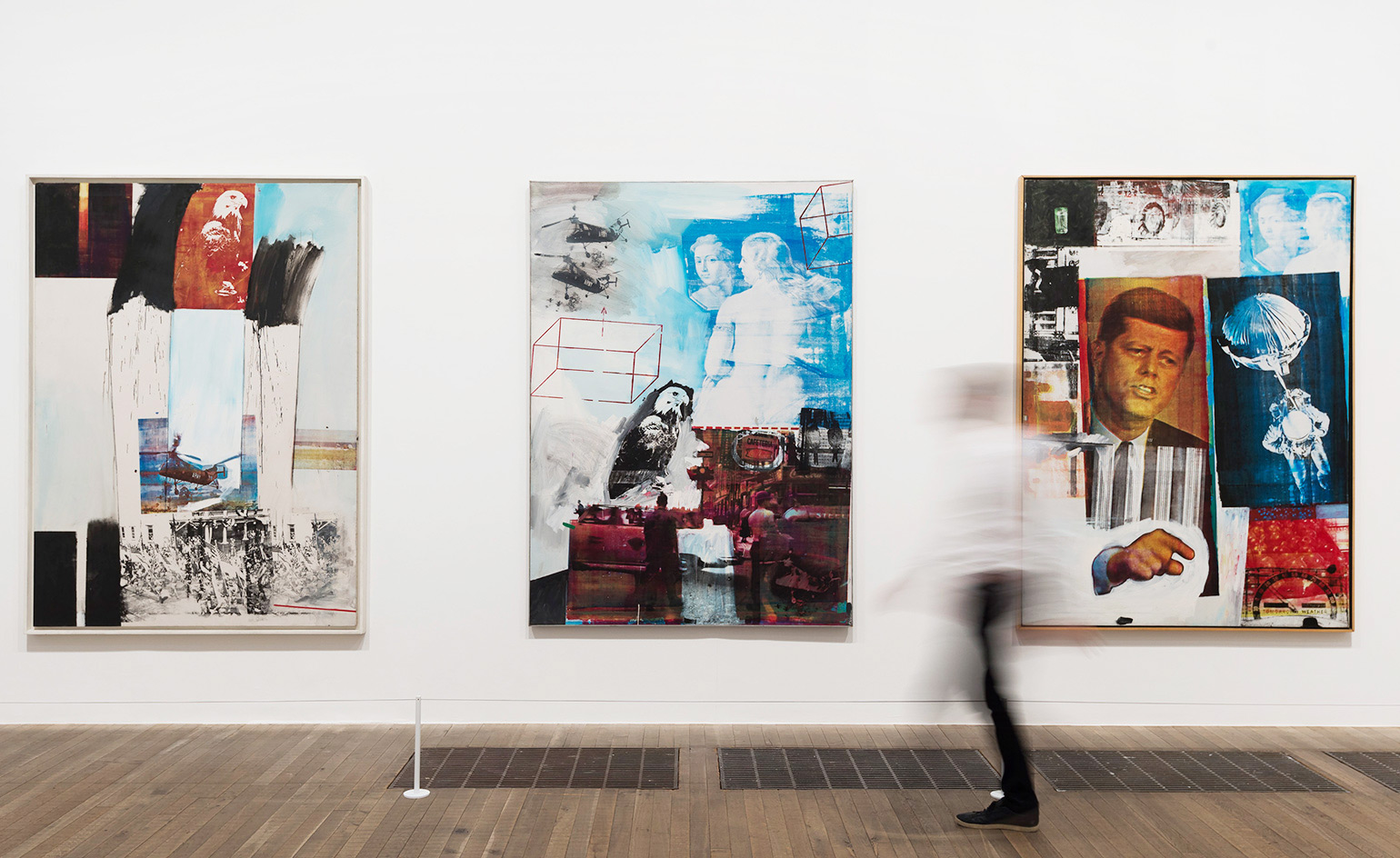
Rauschenberg's silkscreens used images found in newspapers and magazines of the 1960s.
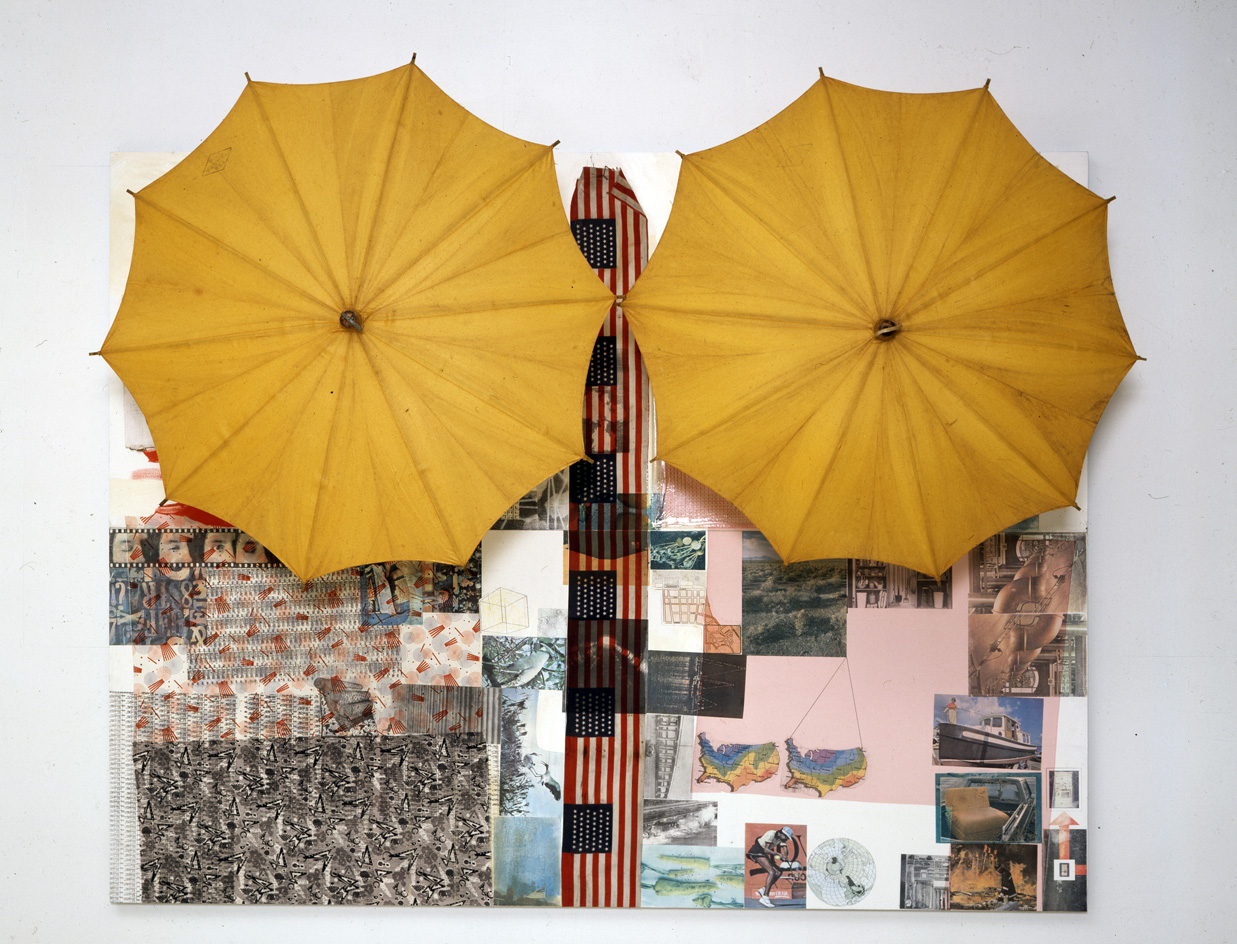
Untitled (Spread), 1983. © Robert Rauschenberg Foundation, New York
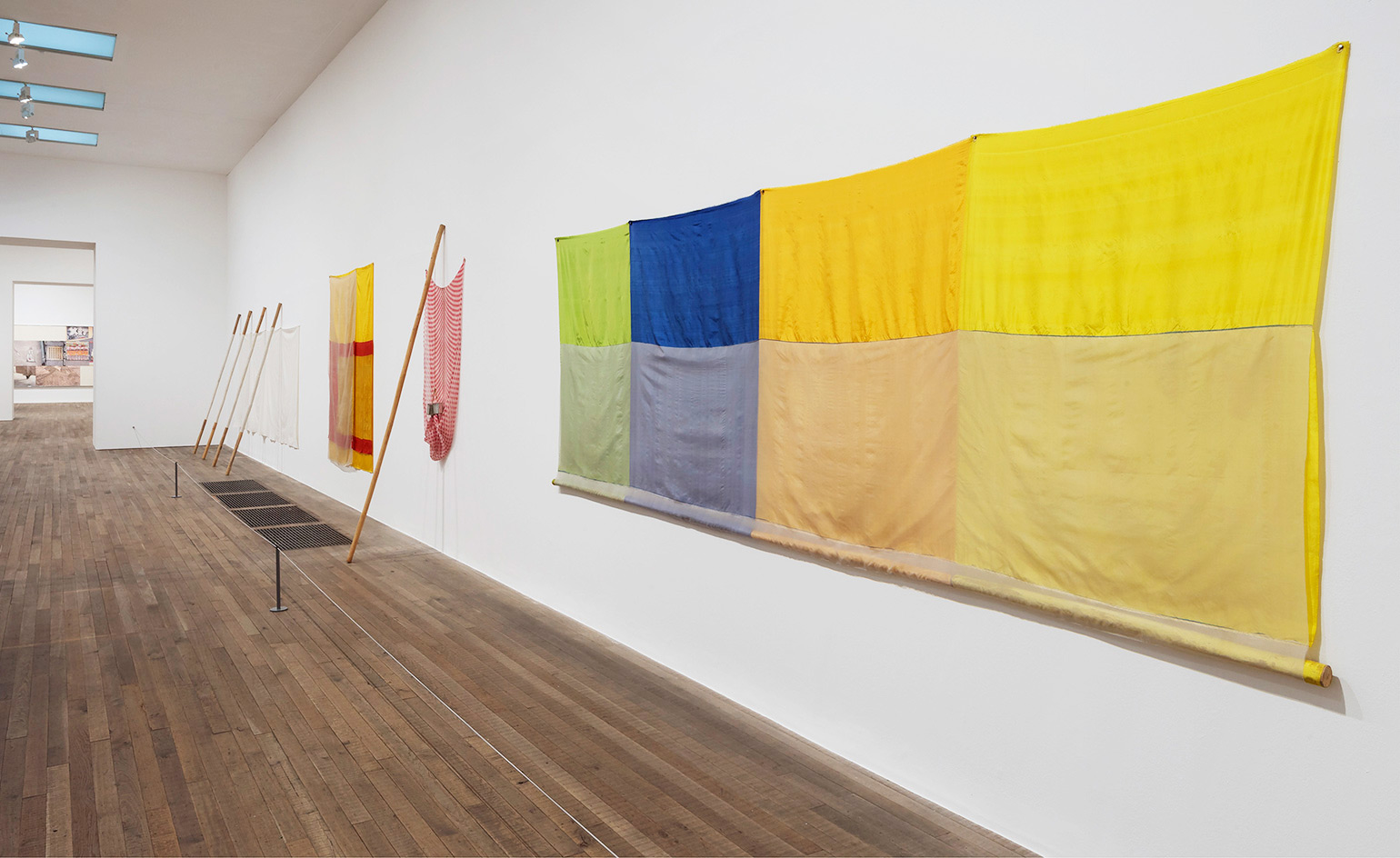
Rauschenberg later experimented with different materials, like great swathes of coloured fabric.
INFORMATION
’Robert Rauschenberg’ is on view until 2 April 2017. For more information, visit the Tate Modern website
ADDRESS
Tate Modern
Bankside
London SE1 9TG
Receive our daily digest of inspiration, escapism and design stories from around the world direct to your inbox.
Elly Parsons is the Digital Editor of Wallpaper*, where she oversees Wallpaper.com and its social platforms. She has been with the brand since 2015 in various roles, spending time as digital writer – specialising in art, technology and contemporary culture – and as deputy digital editor. She was shortlisted for a PPA Award in 2017, has written extensively for many publications, and has contributed to three books. She is a guest lecturer in digital journalism at Goldsmiths University, London, where she also holds a masters degree in creative writing. Now, her main areas of expertise include content strategy, audience engagement, and social media.
-
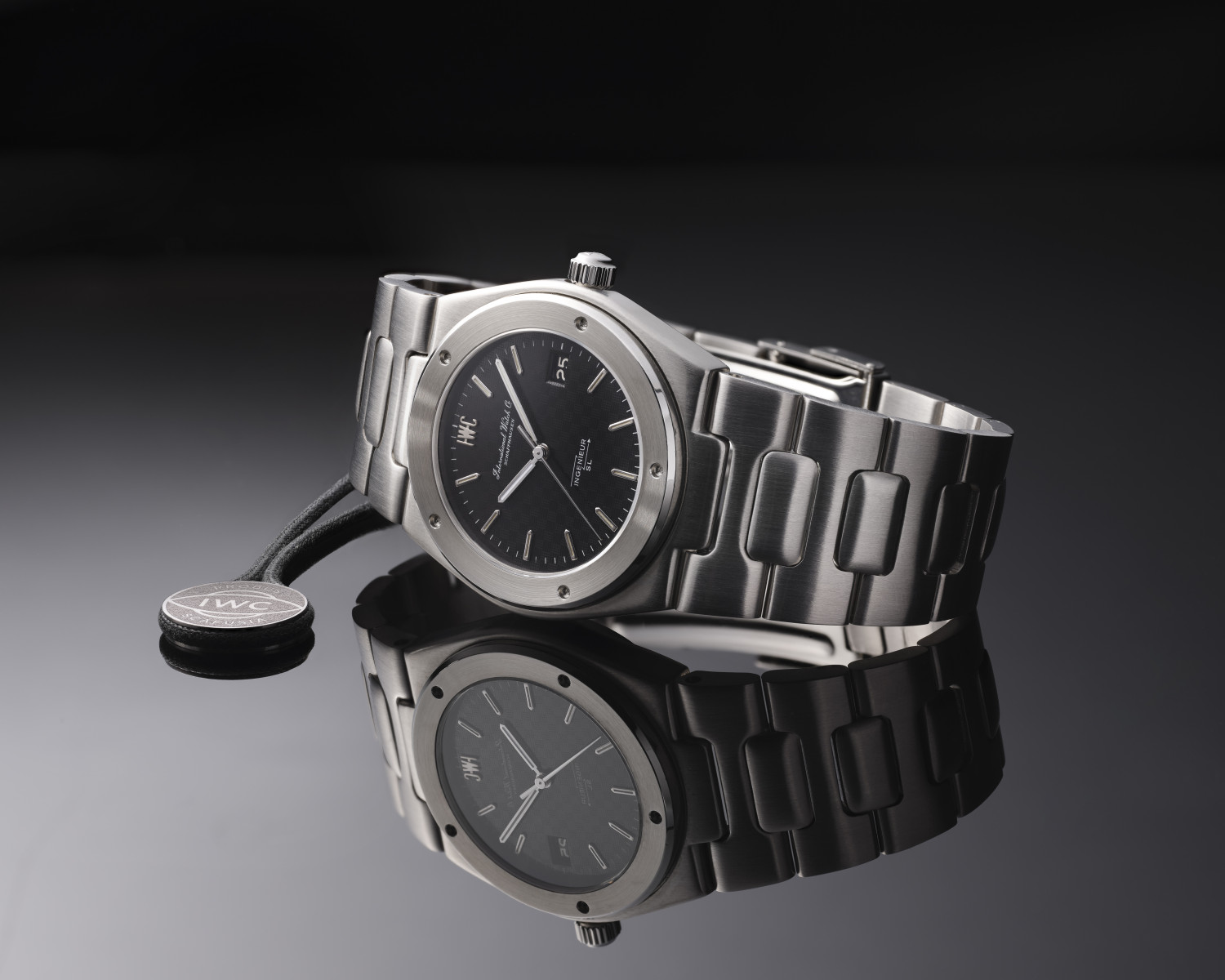 IWC joins the vintage revival, restoring and reselling archival watches
IWC joins the vintage revival, restoring and reselling archival watchesIWC has started to select and restore pieces from its own back catalogue to sell, joining Cartier, Vacheron and Jaeger LeCoultre who have similar programmes. Does the fact that the major watch houses are now getting in on the vintage watch boom – rather than just reissuing vintage-style watches – represent a tipping point for the watch market?
-
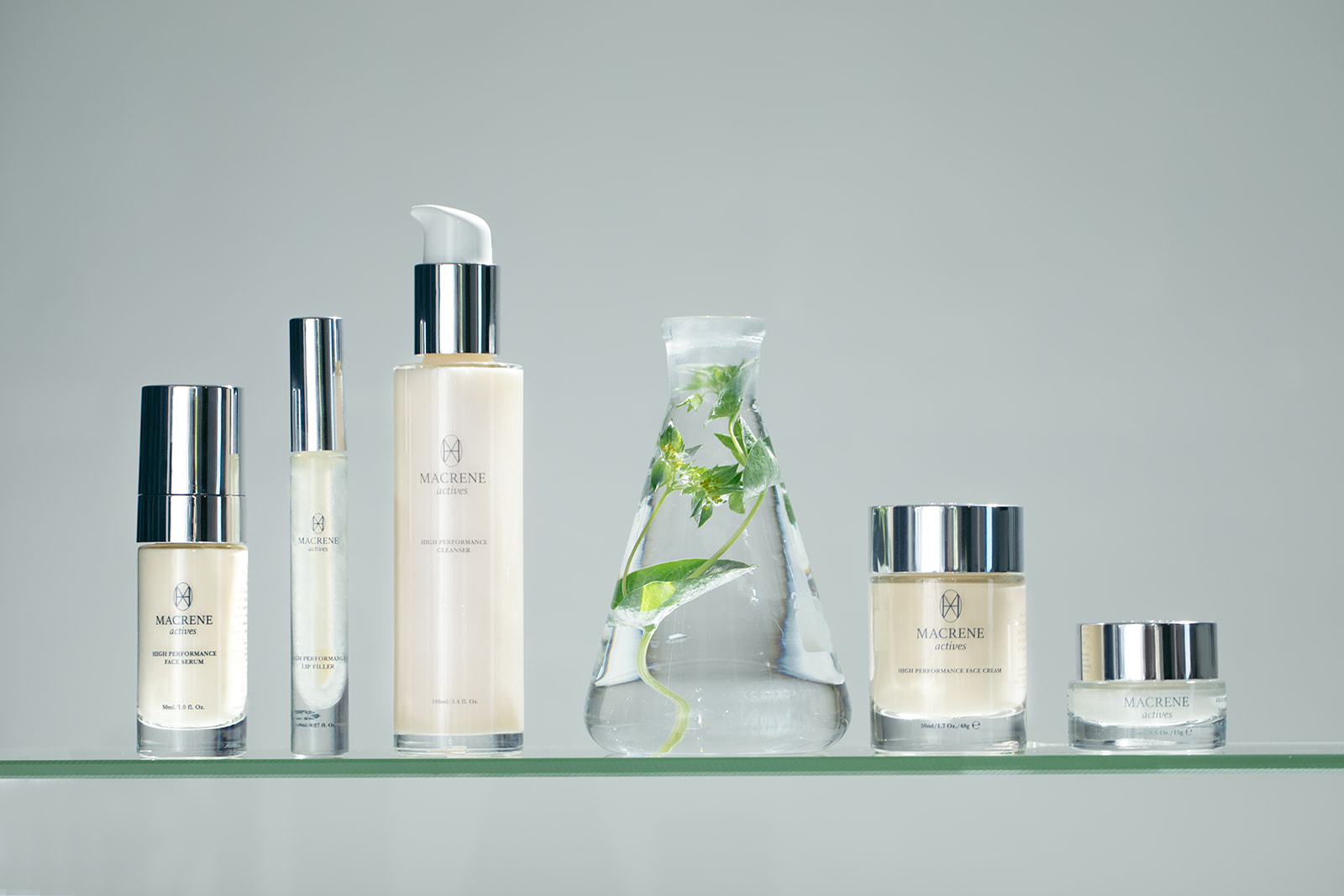 Dr. Macrene has the secret to looking younger, no needles required
Dr. Macrene has the secret to looking younger, no needles requiredThe Find is a beauty dispatch revealing the names, brands and treatments circulating quietly among industry insiders. In this first edition, we speak to the New York dermatologist transforming the skin of the city's most famous faces.
-
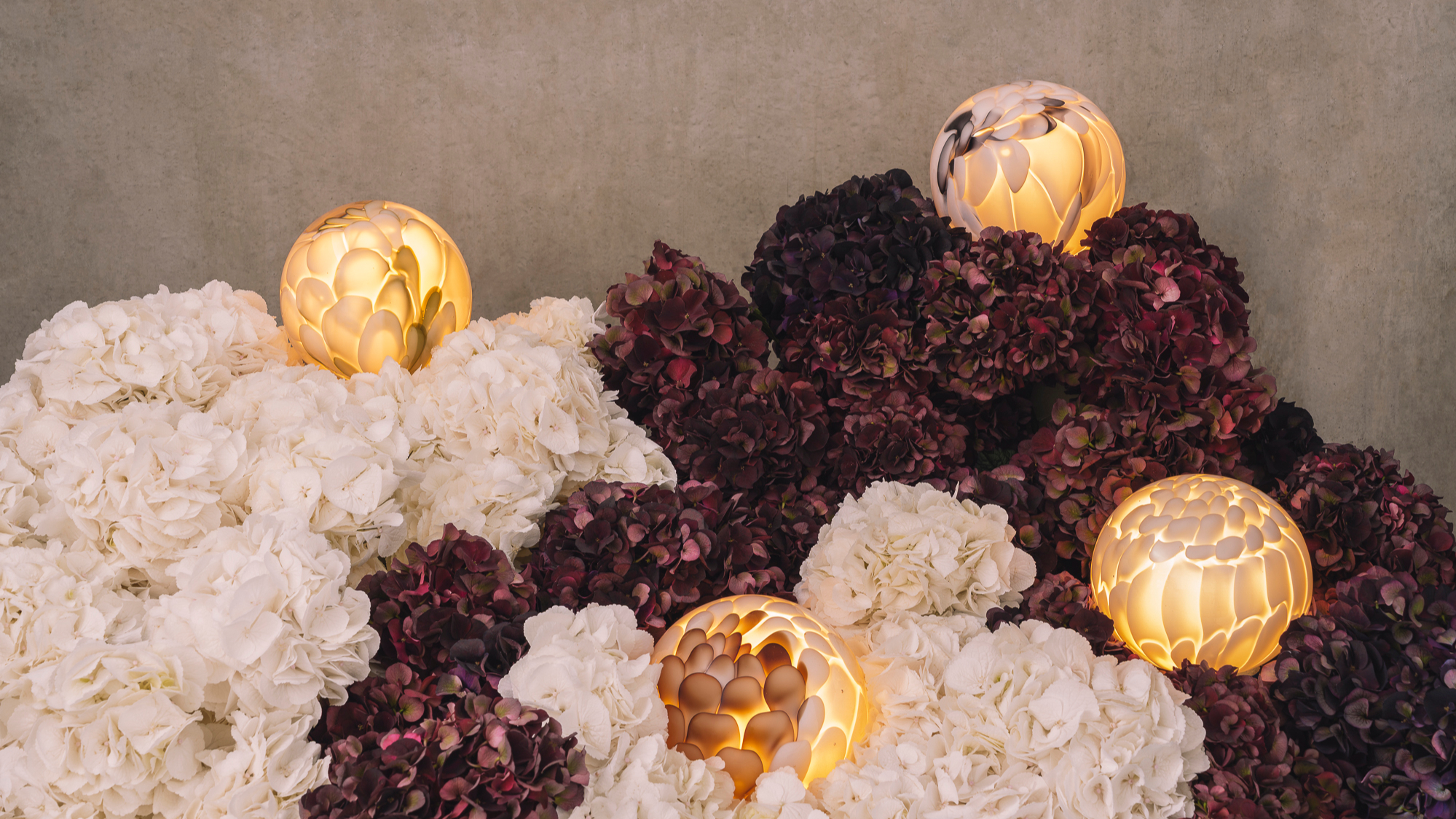 The latest portable light from Bocci is a luminous marvel
The latest portable light from Bocci is a luminous marvelBocci debuts the 118p – a portable lamp with feather-like impressions that are actually 'stretch marks' formed during the glass-making process
-
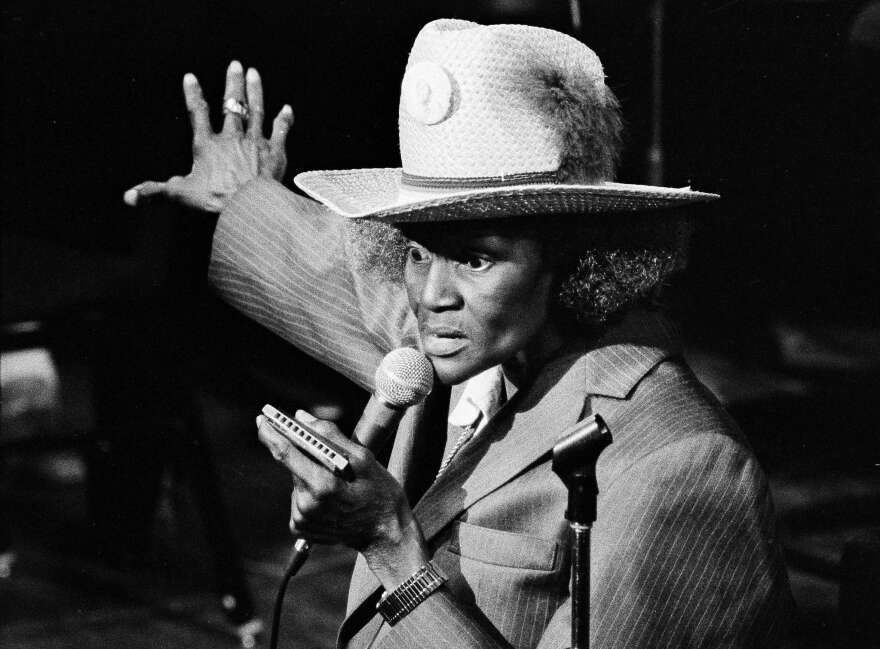 Doc’n Roll Festival returns with a new season of underground music films
Doc’n Roll Festival returns with a new season of underground music filmsNow in its twelfth year, the grassroots festival continues to platform subcultural stories and independent filmmakers outside the mainstream
-
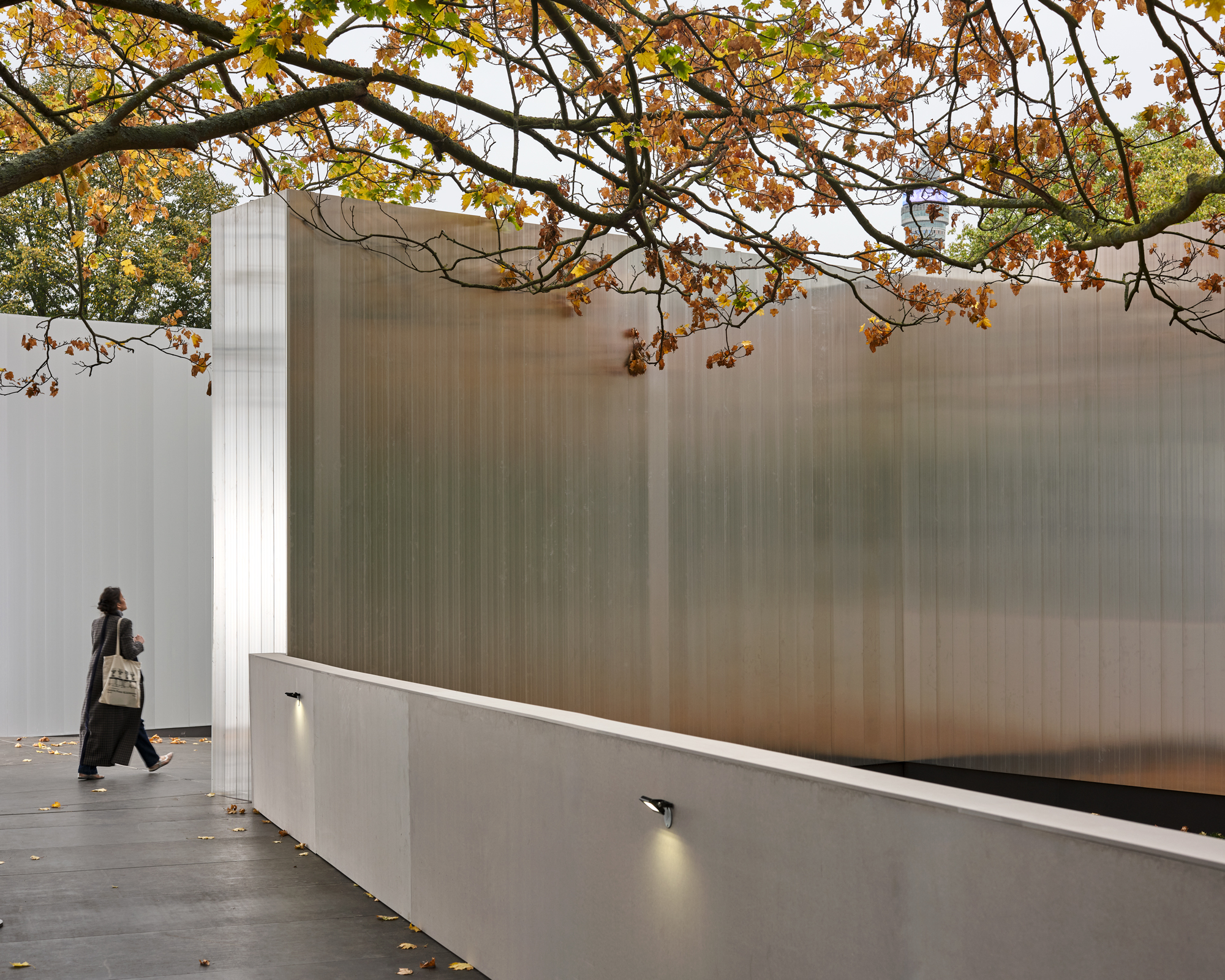 Out of office: The Wallpaper* editors' picks of the week
Out of office: The Wallpaper* editors' picks of the weekThe London office of Wallpaper* had a very important visitor this week. Elsewhere, the team traverse a week at Frieze
-
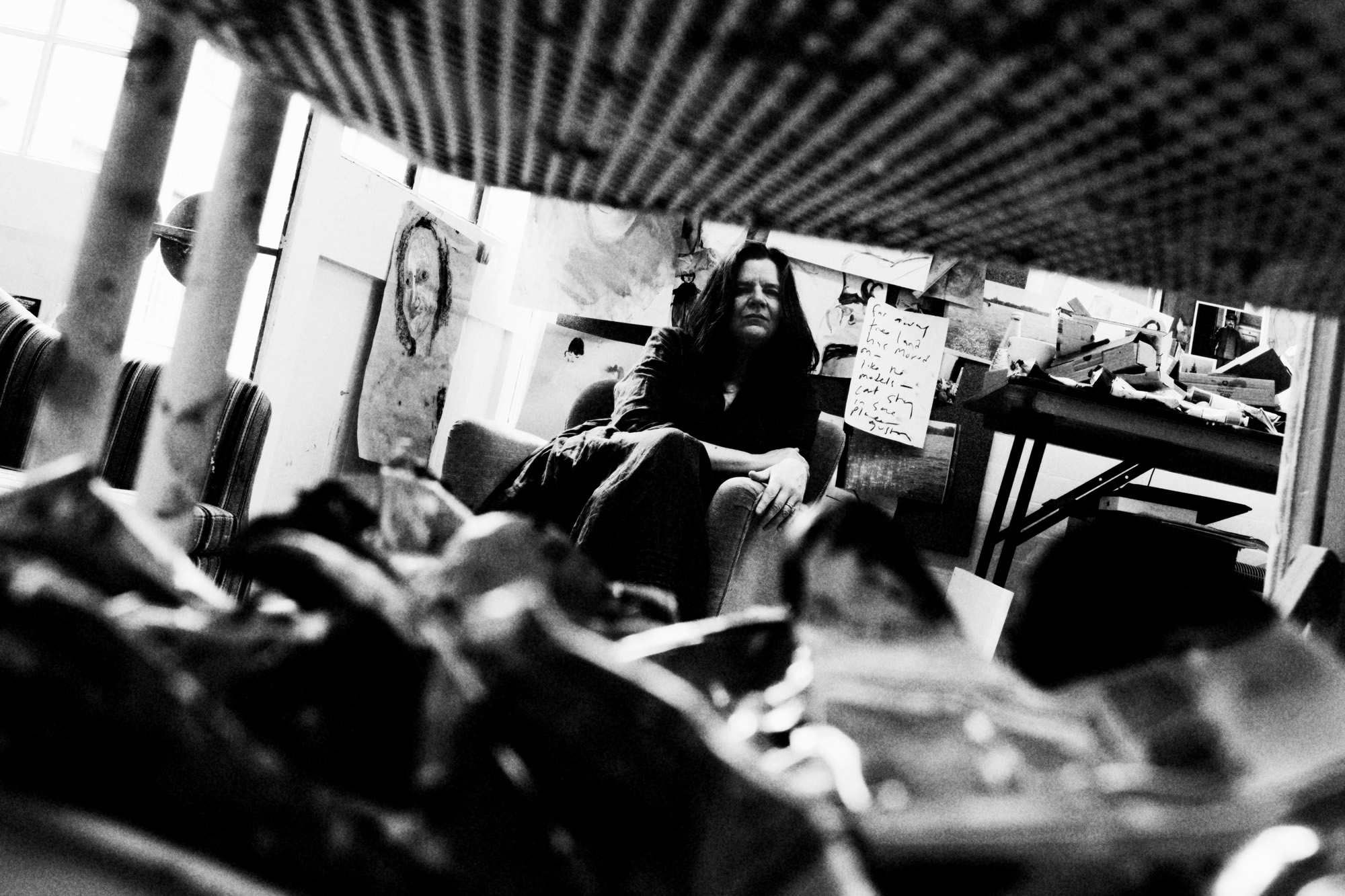 Chantal Joffe paints the truth of memory and motherhood in a new London show
Chantal Joffe paints the truth of memory and motherhood in a new London showA profound chronicler of the intimacies of the female experience, Chantal Joffe explores the elemental truth of family dynamics for a new exhibition at Victoria Miro
-
 Leo Costelloe turns the kitchen into a site of fantasy and unease
Leo Costelloe turns the kitchen into a site of fantasy and uneaseFor Frieze week, Costelloe transforms everyday domesticity into something intimate, surreal and faintly haunted at The Shop at Sadie Coles
-
 Can surrealism be erotic? Yes if women can reclaim their power, says a London exhibition
Can surrealism be erotic? Yes if women can reclaim their power, says a London exhibition‘Unveiled Desires: Fetish & The Erotic in Surrealism, 1924–Today’ at London’s Richard Saltoun gallery examines the role of desire in the avant-garde movement
-
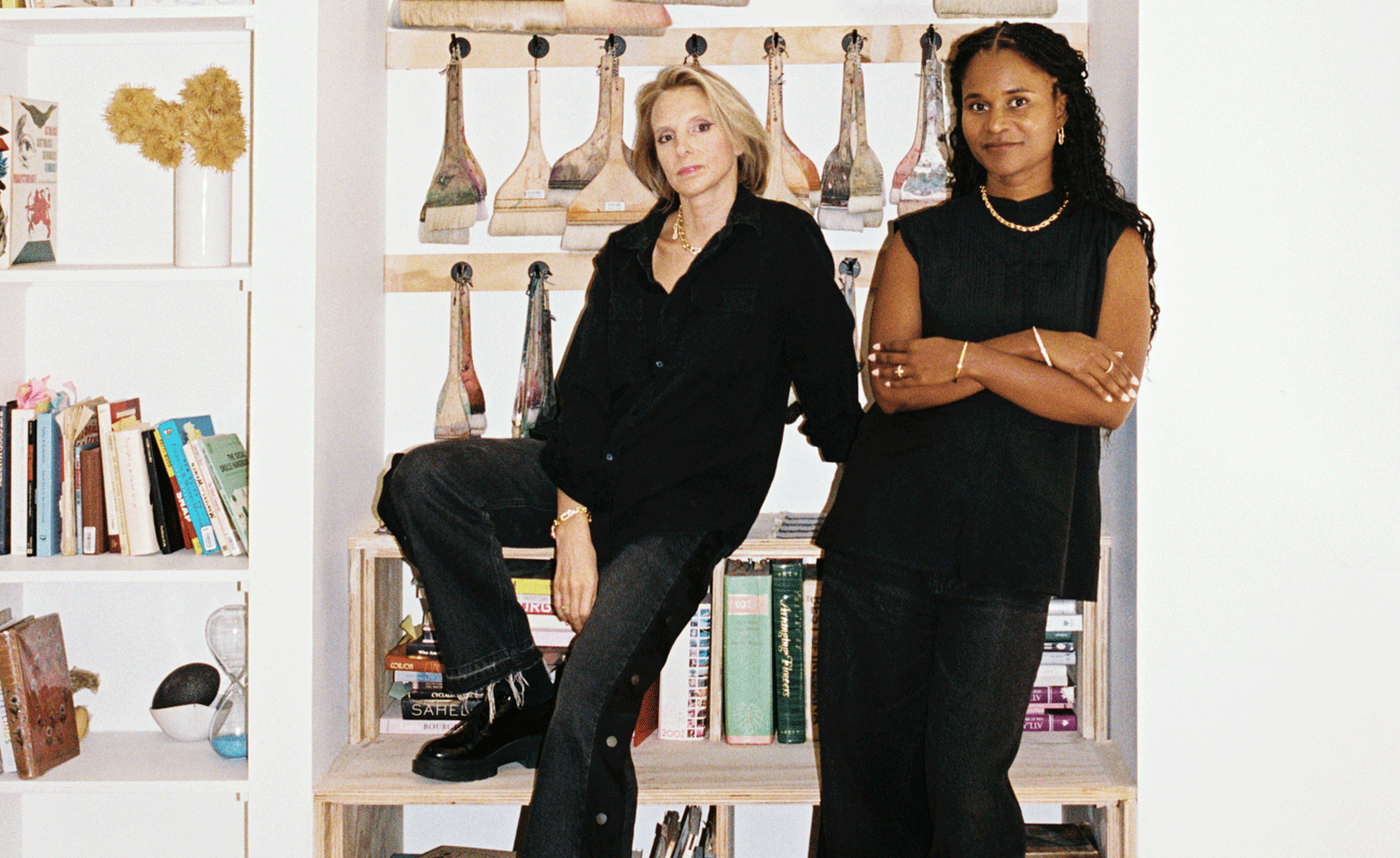 Tiffany & Co’s artist mentorship at Frieze London puts creative exchange centre stage
Tiffany & Co’s artist mentorship at Frieze London puts creative exchange centre stageAt Frieze London 2025, Tiffany & Co partners with the fair’s Artist-to-Artist initiative, expanding its reach and reaffirming the value of mentorship within the global art community
-
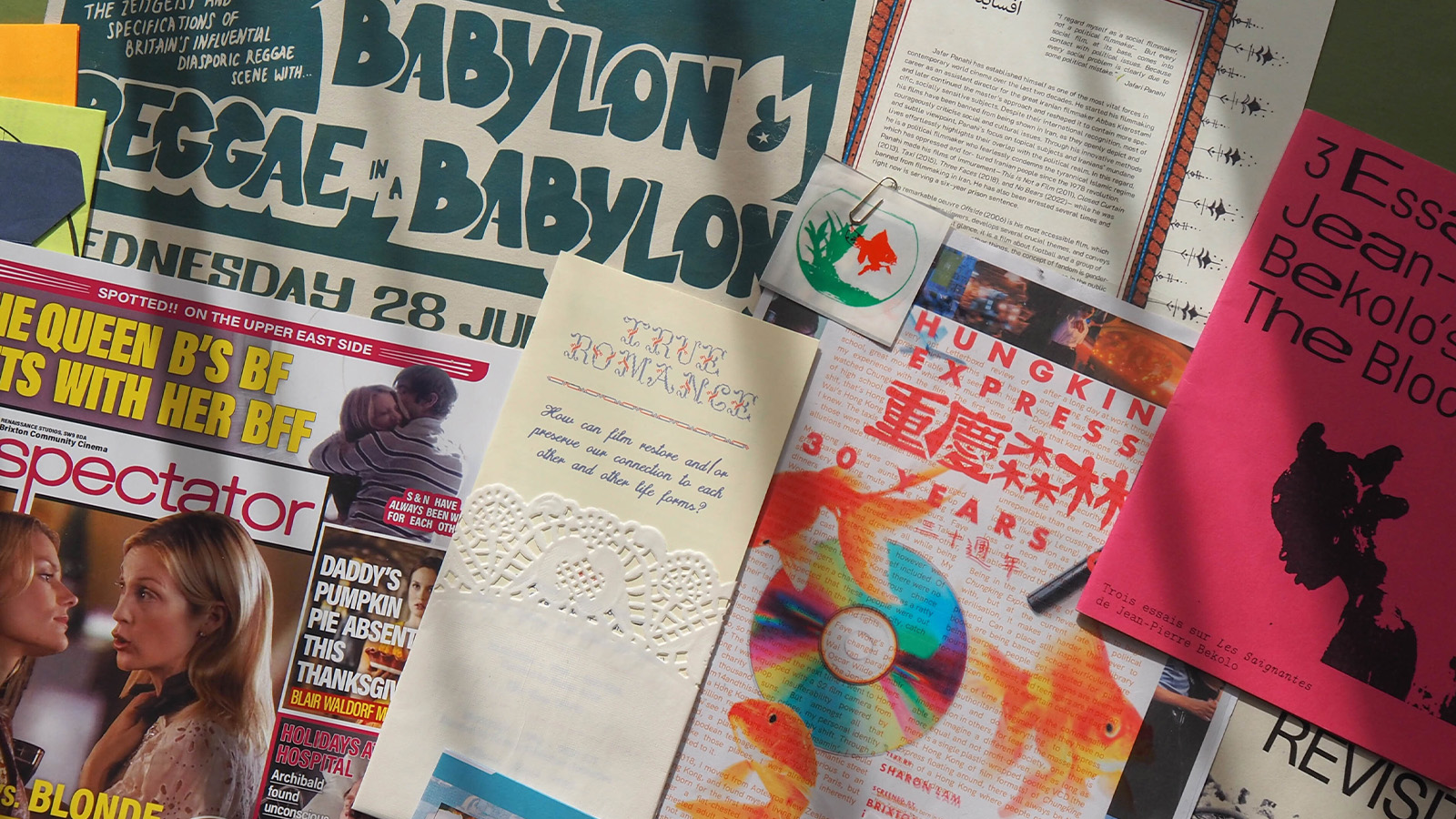 Em-Dash is a small press redefining the indie zine beyond nostalgia
Em-Dash is a small press redefining the indie zine beyond nostalgiaThe South London publishing studio's new imprint 'Practice Meets Paper' translates a chosen artist’s practice into print. Wallpaper*s senior designer Gabriel Annouka speaks with the founders, Saundra Liemantoro and Aarushi Matiyani, to find out more
-
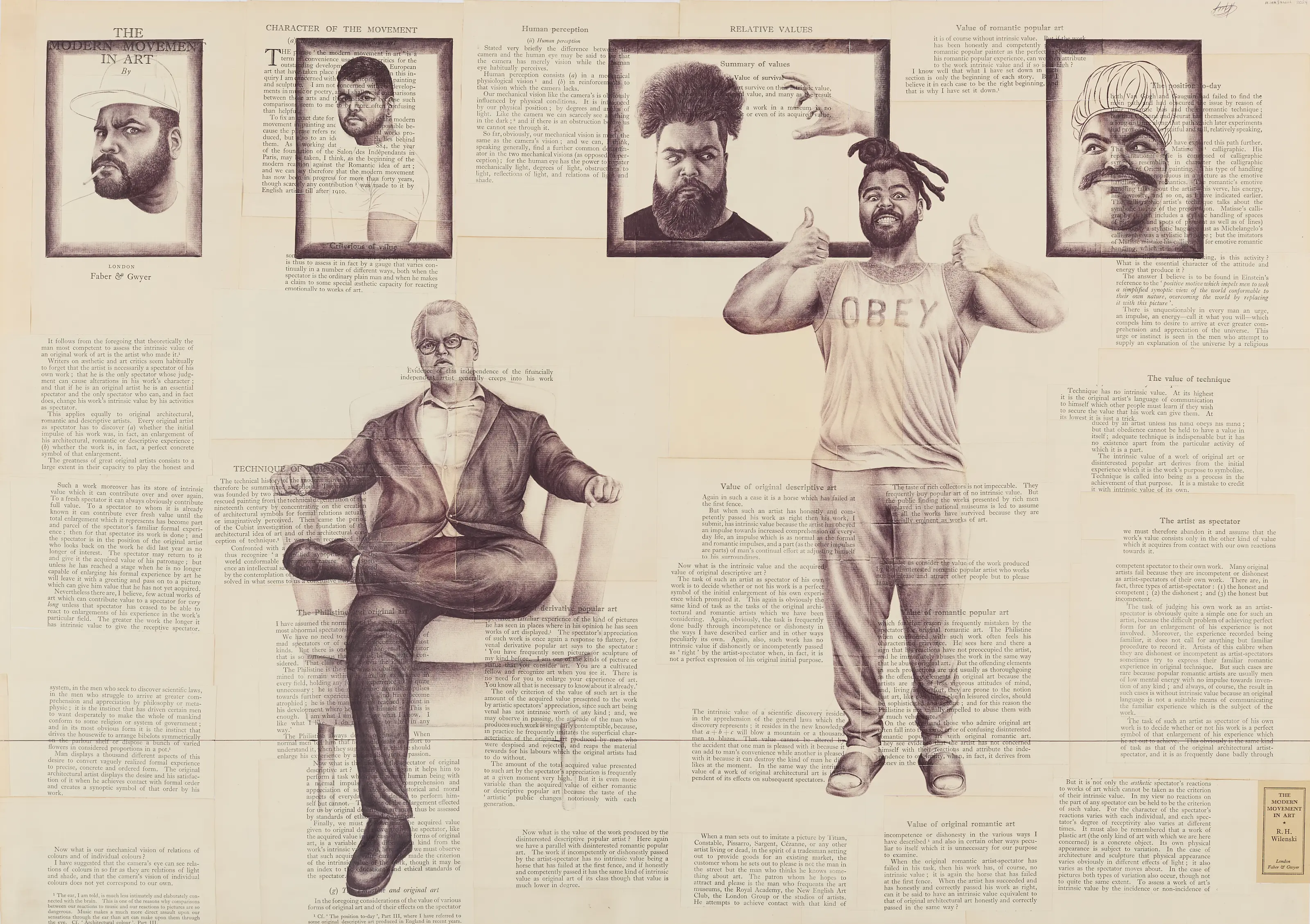 ‘It is about ensuring Africa is no longer on the periphery’: 1-54 Contemporary African Art Fair in London
‘It is about ensuring Africa is no longer on the periphery’: 1-54 Contemporary African Art Fair in LondonThe 13th edition of 1-54 London will be held at London’s Somerset House from 16-19 October; we meet founder Touria El Glaoui to chart the fair's rising influence